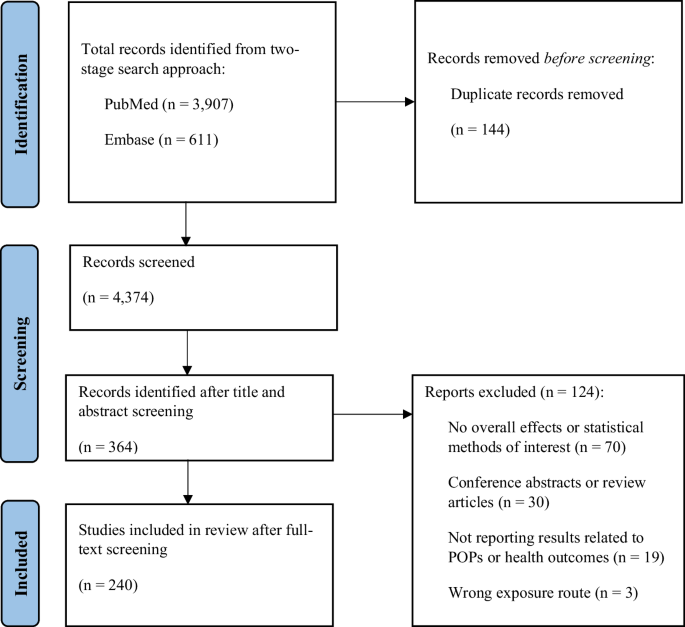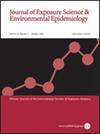在调查持久性有机污染物暴露对健康影响的流行病学研究中应用混合物方法:范围审查
IF 4.7
3区 医学
Q2 ENVIRONMENTAL SCIENCES
Journal of Exposure Science and Environmental Epidemiology
Pub Date : 2024-09-10
DOI:10.1038/s41370-024-00717-3
引用次数: 0
摘要
背景持久性有机污染物(POPs)是一种环境化学物质,其特点是在自然界和人体中的半衰期很长,对健康构成重大风险。暴露体(exposome)的概念涵盖了人一生中所有的环境暴露,它强调了将持久性有机污染物作为混合物而不是孤立的污染物进行研究的重要性。我们旨在总结有关持久性有机污染物混合物总体影响的研究,确定混合物方法--用于调查混合物关联的统计方法--的应用模式,并通过一个案例研究突出说明目前在综合持久性有机污染物混合物对健康影响的流行病学证据方面所面临的挑战。方法我们在 PubMed 和 Embase 上对 2011 年 1 月至 2023 年 4 月间发表的流行病学研究进行了系统的文献检索。其中 126 项研究仅关注全氟烷基和多氟烷基物质 (PFAS) 混合物,40 项研究在混合物分析中分析了三类或三类以上的持久性有机污染物。我们发现有 23 种独特的混合物方法用于估算持久性有机污染物混合物的总体效应,其中贝叶斯核机器回归 (BKMR) 是最常见的一种响应面建模方法。此外,22.9%的研究综合使用了多种方法,包括响应面建模、指数建模、降维建模和潜变量模型。探讨最多的健康结果类别是体重和出生体型(43 项)以及神经系统结果(41 项)。在全氟辛烷磺酸混合物与出生体重的案例研究中,12 项研究显示了负相关,4 项研究结果为空,2 项研究显示了正相关。我们的研究通过提供全面概述,阐明了该领域目前的知识状况,并强调了以持久性有机污染物混合物为重点的流行病学研究中普遍存在的方法障碍。通过分析,我们旨在引导未来的研究方向,促进对评估持久性有机污染物混合物健康影响所涉及的复杂动态有更细致的理解。我们的工作是对正在进行的化学暴露体探索的重要贡献。本文章由计算机程序翻译,如有差异,请以英文原文为准。


Applications of mixture methods in epidemiological studies investigating the health impact of persistent organic pollutants exposures: a scoping review
Persistent organic pollutants (POPs) are environmental chemicals characterized by long half-lives in nature and human bodies, posing significant health risks. The concept of the exposome, encompassing all lifetime environmental exposures, underscores the importance of studying POP as mixtures rather than in isolation. The increasing body of evidence on the health impacts of POP mixtures necessitates the proper application of statistical methods. We aimed to summarize studies on the overall effects of POP mixtures, identify patterns in applications of mixture methods—statistical methods for investigating the association of mixtures—and highlight current challenges in synthesizing epidemiologic evidence of POP mixtures on health effects as illustrated through a case study. We conducted a systematic literature search on PubMed and Embase for epidemiological studies published between January 2011 and April 2023. We included 240 studies that met our eligibility criteria. 126 studies focused on per- and polyfluoroalkyl substances (PFAS) mixtures only, while 40 analyzed three or more classes of POPs in mixture analyses. We identified 23 unique mixture methods used to estimate the overall effects of POP mixtures, with Bayesian Kernel Machine Regression (BKMR), a type of response-surface modeling, being the most common. Additionally, 22.9% of studies used a combination of methods, including response-surface modeling, index modeling, dimension reduction, and latent variable models. The most extensively explored health outcome category was body weight and birth sizes (n = 43), and neurological outcomes (n = 41). In the case study of PFAS mixtures and birth weight, 12 studies showed negative associations, while 4 showed null results, and 2 showed positive associations.
求助全文
通过发布文献求助,成功后即可免费获取论文全文。
去求助
来源期刊
CiteScore
8.90
自引率
6.70%
发文量
93
审稿时长
3 months
期刊介绍:
Journal of Exposure Science and Environmental Epidemiology (JESEE) aims to be the premier and authoritative source of information on advances in exposure science for professionals in a wide range of environmental and public health disciplines.
JESEE publishes original peer-reviewed research presenting significant advances in exposure science and exposure analysis, including development and application of the latest technologies for measuring exposures, and innovative computational approaches for translating novel data streams to characterize and predict exposures. The types of papers published in the research section of JESEE are original research articles, translation studies, and correspondence. Reported results should further understanding of the relationship between environmental exposure and human health, describe evaluated novel exposure science tools, or demonstrate potential of exposure science to enable decisions and actions that promote and protect human health.

 求助内容:
求助内容: 应助结果提醒方式:
应助结果提醒方式:


